Wat Arun (Temple off Dawn)
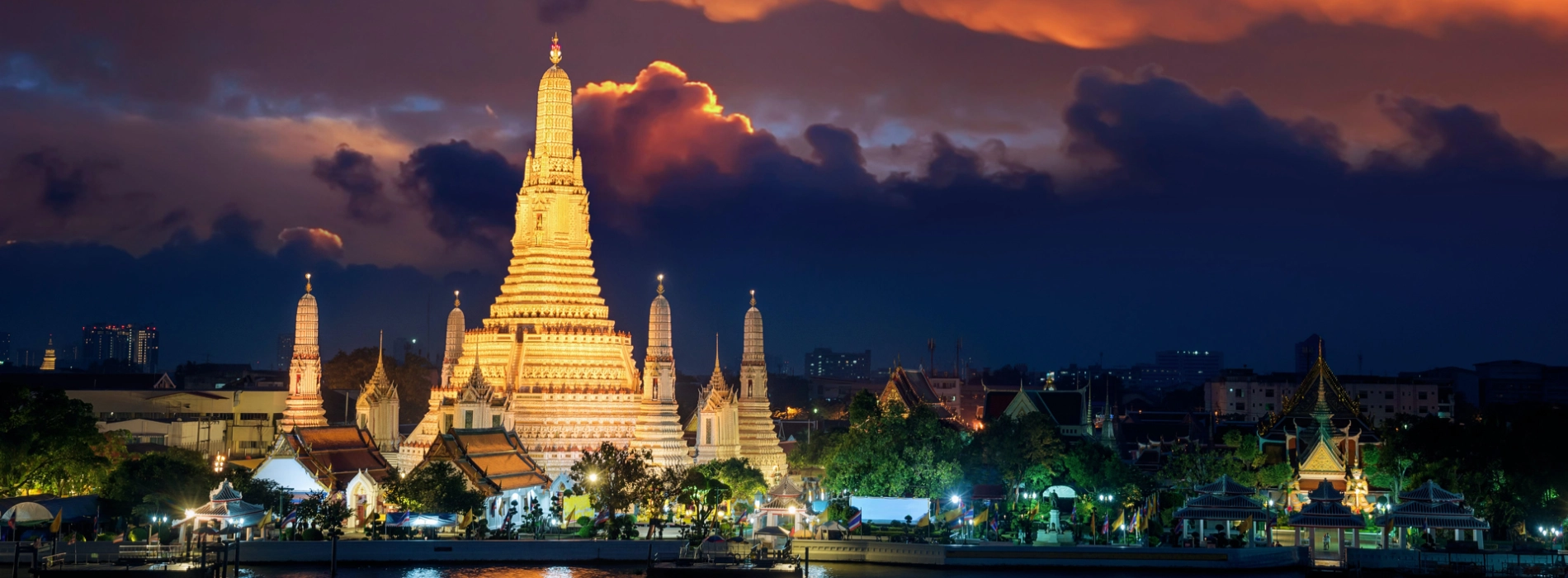
Wat Arun, commonly known as the Temple of Dawn, stands as a majestic and iconic landmark on the west bank of the Chao Phraya River in Bangkok, Thailand. Renowned for its intricate architecture and rich history, this Buddhist temple holds a special place in Thai culture and attracts visitors from around the globe.
The temple's central feature is a towering prang, a spire-like structure reaching approximately 79 meters in height. Decorated with vibrant porcelain tiles and seashells, the prang reflects the first light of dawn, giving rise to its evocative name.
The architecture of Wat Arun reflects a harmonious blend of various cultural influences, creating a unique and visually captivating temple. Its intricate details, symbolic significance, and riverside location make it not only a religious site but also a masterpiece of Thai architectural artistry. Let's explore Wat Arun with Asia King Travel!
In the early 17th century, during the Ayutthaya dynasty, King Taksin, who governed Thonburi, initiated the construction of a temple on this site. Originally named Wat Makok, the temple derived its name from the village where it was situated. Under the reign of King Rama II, a significant restoration took place, and the temple was renamed Wat Chaeng after the king. During this period, Wat Arun not only served as a sacred site but also emerged as a pivotal trading hub, witnessing bustling maritime activities along the Chao Phraya River.
In the early 19th century, King Rama III erected a new central tower at Wat Arun, a structure that continues to define the temple's image today. Distinguished by its original Khmer architecture, the central tower is adorned with vibrant crockery, porcelain, and glass imported from China. Despite facing various challenges and undergoing multiple renovations, Wat Arun experienced a substantial restoration effort in the 20th century. By 1980, the temple received UNESCO recognition as a World Heritage Site, solidifying its status as a crucial landmark in Thai culture and history.
Presently, Wat Arun remains one of the largest Buddhist temples in Bangkok, drawing numerous worshippers, particularly during the serene sunset moments over its tranquil surroundings.
The architecture of Wat Arun is a stunning testament to Thai craftsmanship and cultural fusion, blending elements of Thai, Khmer, and Chinese styles.
Central Prang: The towering central prang is the most prominent feature of Wat Arun. This Khmer-style spire, representing Mount Meru, the center of the universe in Hindu and Buddhist cosmology, stands approximately 79 meters tall. The prang is adorned with intricate designs and decorated with colorful porcelain tiles and seashells, creating a mosaic that reflects the sunlight in a dazzling display.

A significant architectural feature that defines the visual identity of Wat Arun
Satellite Prangs: Surrounding the central prang are four smaller satellite prangs, each dedicated to a different wind direction and the wind god Phra Phai. These prangs add symmetry and balance to the temple's overall design.
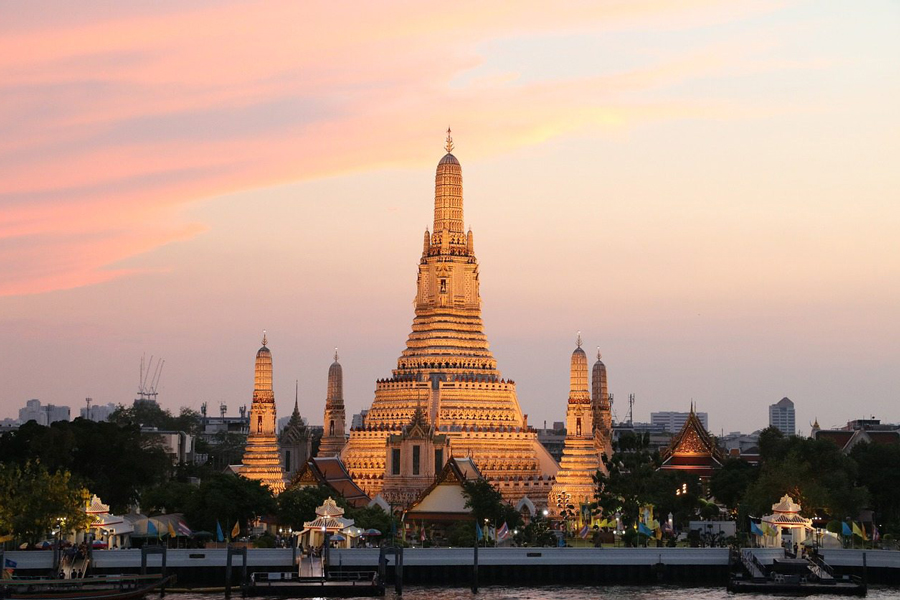
The satellite prangs enhances the visual appeal of Wat Arun
Ubosot: The ordination hall, or ubosot, is a traditional Thai architectural structure within the temple complex. It houses a golden Buddha image and features Thai-style architecture, with a multi-tiered roof and intricately carved wooden details.
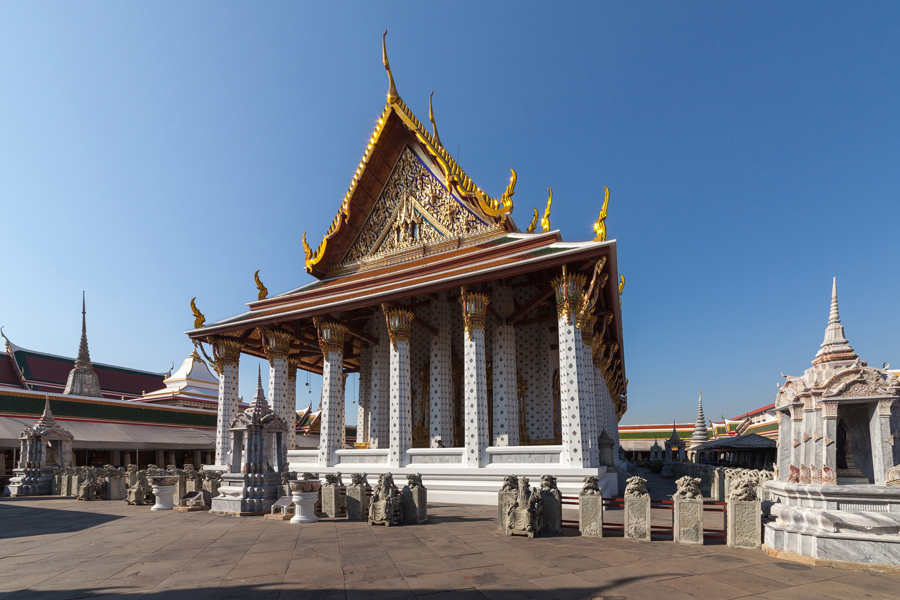
Ubosot - A crucial role in the religious activities conducted at Wat Arun
Decorative Ceramic Tiles: Wat Arun is adorned with a profusion of ceramic tiles and seashells. The use of vibrant colors and intricate patterns on the prang and other structures contributes to the temple's unique and visually striking appearance.
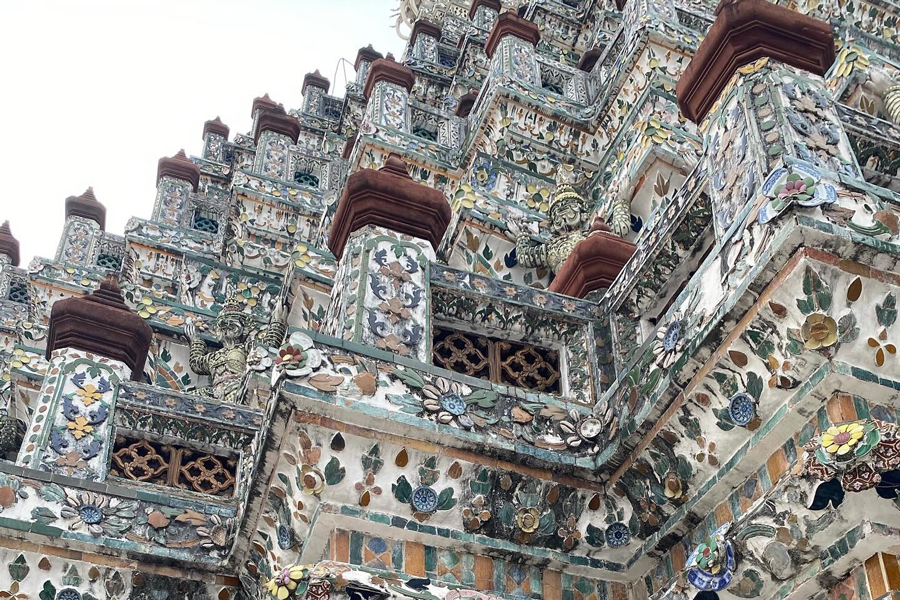
The tiles are meticulously arranged to form detailed images and motifs
Demon Guardians: At the entrance of the temple, imposing demon guardians, known as Yaksha, stand on either side of the staircase. These mythical figures serve as protectors of the temple and add a sense of grandeur to the entrance.
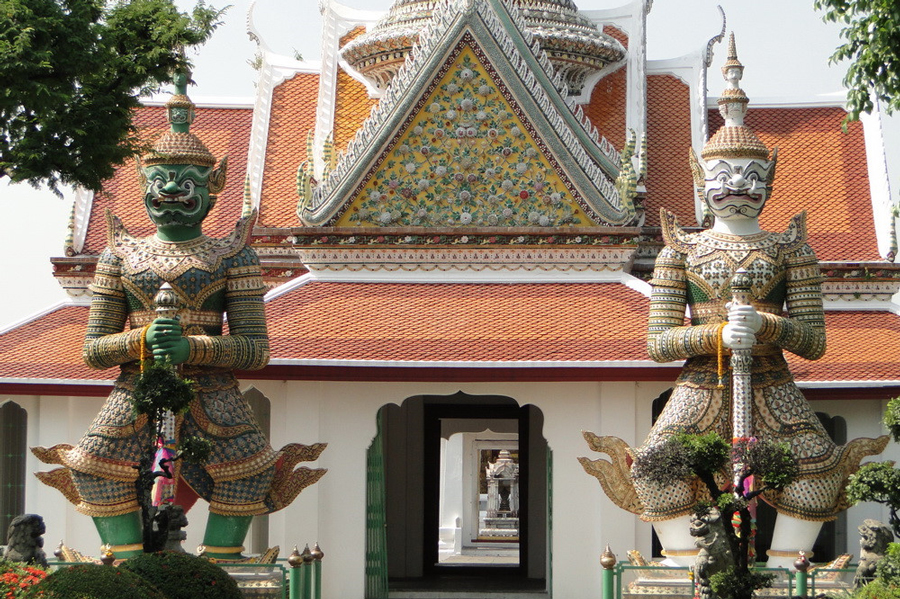
The demon guardians - A common feature in Thai temple architecture
Chinese Statues: Throughout the temple complex, you'll find Chinese statues and elements, showcasing the historical influence of Chinese culture in Thai art and architecture. These include statues of soldiers, animals, and mythological creatures.

The Chinese statues reflects the cultural exchange between Thailand and China
Opening hours: 8:00 am - 5:30 pm.
Ticket price: 100 Baht/person
The Wat Arun Temple welcomes visitors throughout the entire year, offering the flexibility to explore its beauty at any time. Nevertheless, the period from November to February is often regarded as the most favorable. During these months, the weather in Bangkok is notably cooler and drier, providing an optimal and comfortable environment for exploration. Following your visit to Wat Arun, you have the opportunity to discover numerous other captivating destinations within the capital. This time frame allows for a well-rounded and enjoyable exploration of both the temple and the surrounding attractions.
Situated prominently along the river, the historic Wat Arun Temple in Thailand commands attention when observed from a distance, rising gracefully above the water. Found on the northern bank of the Chao Phraya River within the Thonburi district, its distinct location offers a unique and picturesque approach - by boat. Commencing the journey from Sapphan Taksin pier to wharf number 8, visitors can board a small boat, traversing the river to reach the temple. With a nominal fee of 3 baht, it is advisable to check the temple's operating hours for a well-planned itinerary. Additionally, alternative transportation options such as taxis or trains provide swift access to the temple grounds